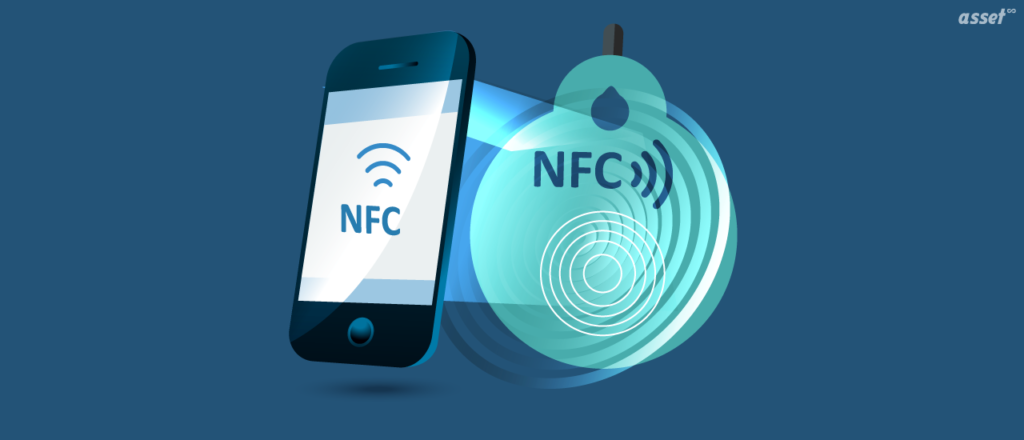
NFC (Near Field Communication) is a short-range wireless technology that enables the exchange of data between devices. It allows devices such as smartphones, tablets, and laptops to communicate with each other and with other types of NFC-enabled devices and systems, such as NFC tags and NFC readers.
NFC works by using magnetic field induction to communicate between two NFC-enabled devices. When two NFC-enabled devices are brought within close proximity of each other (usually less than 4 inches or 10 centimeters), they can communicate with each other through the NFC technology.
To use NFC, one device, such as a smartphone, must be placed near the other device, or an NFC reader or tag. The NFC reader or tag can be embedded in a variety of devices and systems, including point-of-sale terminals, door locks, and public transportation systems.
Once the devices are in close proximity, the NFC technology allows them to communicate and exchange information, such as payment information or access codes. This can be done through a variety of methods, including tapping the devices together, or simply holding them close to each other.
NFC is a convenient and secure way to exchange information between devices and systems, and it is increasingly being used in a variety of applications, including mobile payments, access control, and event ticketing.
Who discovered nfc?

NFC (Near Field Communication) technology was developed by NXP Semiconductors, a Dutch semiconductor manufacturer, in the early 2000s. The first NFC-enabled phone was the Nokia 6131, which was released in 2006.
NFC technology is based on RFID (Radio-Frequency Identification) technology, which has been around since the 1970s. RFID technology uses radio waves to communicate between a reader and a tag attached to an object, and it is used for a variety of purposes, including tracking inventory and access control.
NFC technology builds upon RFID technology by adding the ability to communicate and exchange information between two NFC-enabled devices when they are brought within close proximity of each other (usually less than 4 inches or 10 centimeters). This enables a wide range of applications, including mobile payments, access control, event ticketing, and file transfer.
What can NFC do on my phone?
NFC technology on a smartphone can be used for a variety of purposes, including:
- Mobile payments: Many smartphones now have NFC technology built-in, which allows them to make contactless payments using mobile payment apps such as Google Pay or Apple Pay. To make a payment, you simply hold your phone near a compatible NFC payment terminal and the payment is processed automatically.
- Access control: NFC technology can be used to unlock doors and gates, or to grant access to secure areas. For example, an office building might use NFC technology to allow employees to enter using their smartphones.
- Event ticketing: NFC technology can be used to store and display event tickets on a smartphone. To enter an event, you simply hold your phone near a compatible NFC reader and the ticket will be scanned and validated.
- File transfer: You can use NFC to quickly and easily transfer files between two NFC-enabled devices by simply holding them near each other.
- Connecting to other devices: NFC can be used to quickly and easily establish a connection between two devices, such as a smartphone and a wireless speaker.
- Reading NFC tags: NFC tags are small chips that can store and transmit information. You can use your smartphone’s NFC technology to read and interact with NFC tags, which can be embedded in a variety of objects, such as posters, products, and business cards.
These are just a few examples of what NFC technology can do on a smartphone. There are many other uses for NFC technology, and new applications are being developed all the time.
Which phones have NFC?
Most modern smartphones have NFC capabilities, including:
- Apple iPhone 6 and newer models
- Samsung Galaxy S6 and newer models
- Google Pixel and newer models
- OnePlus 6 and newer models
- LG G6 and newer models
- Motorola Moto Z and newer models
- Huawei P10 and newer models
- Sony Xperia XZ2 and newer models
This is just a partial list, as many other smartphone brands and models also have NFC capabilities. You can check if your smartphone has NFC by looking for the NFC symbol (usually a small square or circle with four curved lines) on the device, or by checking the device’s specifications or documentation.
Keep in mind that while most modern smartphones have NFC capabilities, not all of them support all NFC features. For example, some smartphones may not support mobile payments or certain types of NFC tags. It’s always a good idea to check with the manufacturer or your mobile carrier to find out more about the specific NFC capabilities of your device.
NFC vs. Bluetooth vs. RFID vs. UWB
NFC (Near Field Communication), Bluetooth, RFID (Radio-Frequency Identification), and UWB (Ultra-Wideband) are all different wireless technologies that can be used to communicate between devices or to transfer data. Here’s a brief overview of each technology:
- NFC: NFC is a short-range wireless technology that allows devices to communicate and exchange information when they are brought within close proximity of each other (usually less than 4 inches or 10 centimeters). NFC is commonly used for mobile payments, access control, event ticketing, and file transfer.
- Bluetooth: Bluetooth is a wireless technology that allows devices to communicate and exchange information over short distances (usually up to about 30 feet or 10 meters). It is commonly used for connecting devices such as headphones, speakers, and keyboards to smartphones and computers.
- RFID: RFID is a wireless technology that uses radio waves to communicate between a reader and a tag attached to an object. RFID is used for a variety of purposes, including tracking inventory, identifying animals, and access control.
- UWB: UWB is a wireless technology that uses very high frequency radio waves to communicate over short distances (usually less than about 30 feet or 10 meters). UWB is used for a variety of purposes, including location tracking, indoor positioning, and high-speed data transfer.
Each of these technologies has its own specific uses and characteristics, and they are not necessarily mutually exclusive. For example, a device may use NFC for mobile payments and Bluetooth for connecting to headphones, or an RFID reader may be used in combination with a UWB system for location tracking.
Should I turn NFC off on my phone?
It’s generally not necessary to turn off NFC on your smartphone unless you have a specific reason to do so. Here are a few reasons you might want to consider turning off NFC on your phone:
- To save battery life: NFC uses a small amount of power, so if you’re concerned about conserving battery, you may want to turn off NFC when it’s not in use. However, in most cases, the impact on battery life will be minimal.
- To reduce the risk of unauthorized access: If you’re concerned about the security of your device, you may want to consider turning off NFC to reduce the risk of unauthorized access. However, it’s important to note that NFC security is generally considered to be very good, and the risk of unauthorized access is low.
- If you’re experiencing interference: In some cases, NFC can interfere with other wireless technologies, such as Wi-Fi or Bluetooth. If you’re experiencing interference issues, turning off NFC may help.
Overall, the decision to turn off NFC on your smartphone is a personal one and will depend on your specific needs and preferences. If you’re not sure whether to turn off NFC, you may want to consult with the manufacturer or your mobile carrier for more information.









